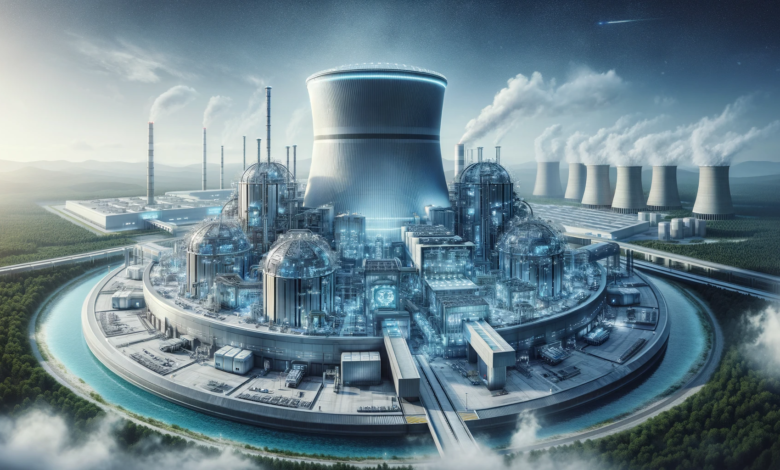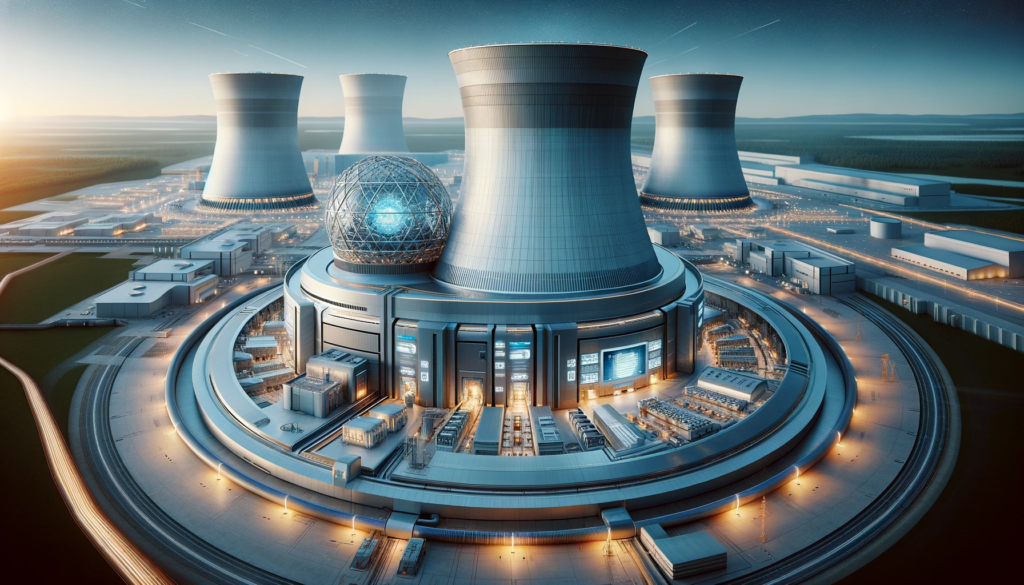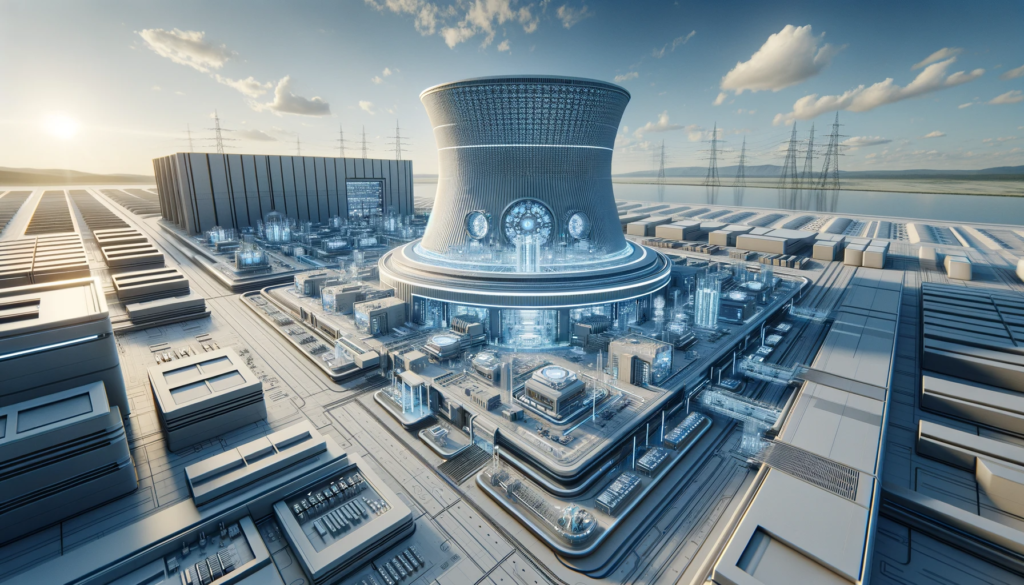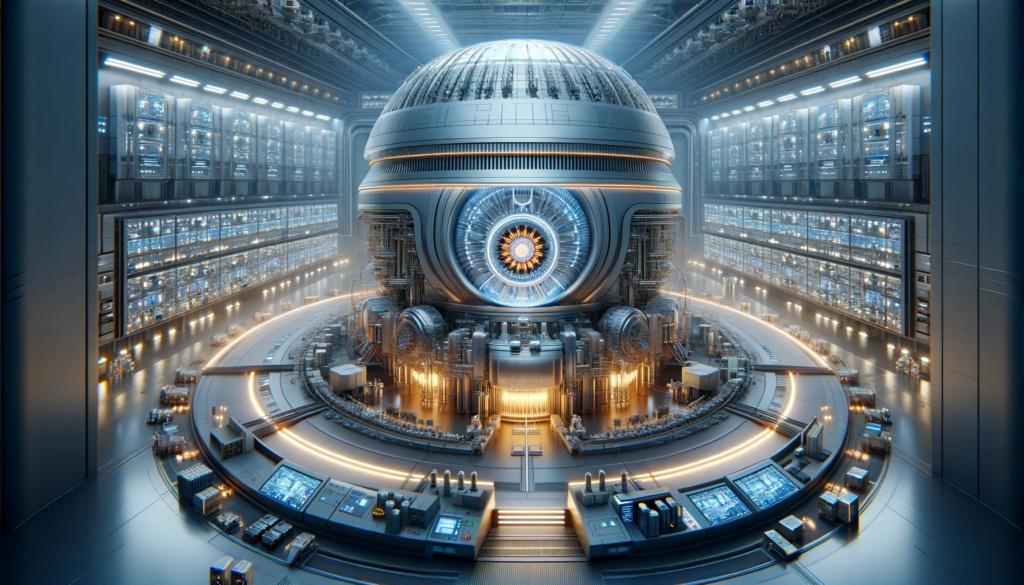Generation IV Nuclear Reactors: The Future of Nuclear Energy

Generation IV Nuclear Reactors
Generation IV Nuclear Reactors” Generation IV nuclear reactors represent the next evolution in nuclear power technology, promising enhanced safety, efficiency, and sustainability compared to their predecessors. As the world increasingly seeks cleaner energy sources to combat climate change, these advanced reactors offer a promising solution.
Understanding Generation IV Reactors
Generation IV reactors are a set of nuclear reactor designs currently under development, expected to be commercially available by the 2030s. These designs aim to address the limitations of current reactors in terms of fuel efficiency, waste management, and safety.

Key Features of Generation IV Reactors
Enhanced Safety
These reactors are designed with inherent safety features that reduce the risk of accidents. Advanced materials and design concepts, such as passive safety systems, ensure that they can shut down safely without human intervention in the event of a malfunction.
Improved Fuel Efficiency
Generation IV reactors are expected to utilize fuel more efficiently, producing more energy per unit of fuel. This efficiency not only makes them more economical but also reduces the amount of waste generated.
Reduced Nuclear Waste
A significant advantage of these reactors is their ability to minimize nuclear waste. Some designs can even use existing nuclear waste as fuel, helping to solve the long-standing issue of nuclear waste disposal.
Versatility and Scalability
These reactors are designed to be more adaptable and scalable, capable of serving large power grids as well as remote and smaller communities.
The Six Designs of Generation IV Reactors
- Gas-Cooled Fast Reactor (GFR)
- Lead-Cooled Fast Reactor (LFR)
- Molten Salt Reactor (MSR)
- Sodium-Cooled Fast Reactor (SFR)
- Supercritical-Water-Cooled Reactor (SCWR)
- Very High Temperature Reactor (VHTR)
Each design offers unique advantages and caters to different requirements in terms of fuel efficiency, safety, and waste reduction.

Challenges in Developing Generation IV Reactors
Despite their potential, several challenges need to be addressed:
- Advanced Materials and Durability: Developing materials that can withstand the extreme conditions inside Generation IV reactors, such as high temperatures and radiation levels, is a significant challenge. These materials must maintain integrity over long periods to ensure reactor safety and efficiency.
- Cooling Systems: Implementing effective and safe cooling systems is crucial, especially for reactors using liquid metals or molten salts, which present unique engineering challenges compared to traditional water-cooled systems.
- Waste Management: Although Generation IV reactors aim to reduce nuclear waste and increase fuel efficiency, managing the remaining waste, especially high-level waste, remains a complex issue. Safe, long-term storage solutions are still needed.
- Safety and Containment: Ensuring absolute safety in the event of malfunctions or accidents is paramount. Designing robust containment systems that can withstand potential incidents, including natural disasters, is a significant engineering challenge.
- Proliferation Risks: Mitigating proliferation risks associated with nuclear materials is critical. Generation IV reactors must be designed to minimize the potential for nuclear material diversion or misuse.
- Cost and Economic Viability: The development and construction of Generation IV reactors require substantial investment. Balancing the high initial costs with the anticipated long-term benefits is a major challenge, especially in competitive energy markets.
- Public Perception and Acceptance: Overcoming public skepticism and fear surrounding nuclear energy, partly due to past nuclear incidents, is a hurdle. Gaining public trust through transparency and education about the safety and benefits of these reactors is essential.
- Regulatory Hurdles: Adapting existing nuclear regulations and developing new frameworks to accommodate the novel technologies of Generation IV reactors is a complex process. This involves international collaboration and agreement on safety and operational standards.
- Integration with Energy Grids: Integrating Generation IV reactors into existing energy grids, which are not always equipped for nuclear energy, presents logistical and technical challenges. This includes managing the variable output from renewable sources alongside the steady output from nuclear reactors.
- Research and Development: The advanced technologies of Generation IV reactors are still largely in the research and development phase. Overcoming technical uncertainties and proving their feasibility and reliability through extensive testing and demonstration is a significant challenge.
- Skilled Workforce: Developing a skilled workforce capable of building, operating, and maintaining these advanced reactors is crucial. This requires significant investment in education and training programs.
- Global Collaboration: Given the global implications of nuclear technology, international collaboration is essential in research, development, safety protocols, and environmental protection. Navigating the geopolitical landscape to foster such collaboration can be challenging.
Global Efforts and Collaboration
Countries around the world are collaborating through initiatives like the Generation IV International Forum (GIF). This cooperation is vital for sharing research, standardizing safety protocols, and fostering innovation.
Environmental Impact and Climate Change Mitigation
Generation IV reactors could play a critical role in reducing greenhouse gas emissions. By providing a reliable and low-carbon source of energy, they can help meet the global energy demand while supporting climate change mitigation efforts.
The Future of Nuclear Energy
As the world moves towards a more sustainable energy future, Generation IV nuclear reactors hold the promise of safer, more efficient, and environmentally friendly nuclear power. Their development and deployment could mark a new era in energy production, potentially transforming our approach to meeting the world’s energy needs sustainably.

Generation IV nuclear reactors, with their advanced features and potential benefits, represent a significant step forward in nuclear technology. While challenges remain, their successful development and deployment could herald a new age of safe, efficient, and sustainable nuclear power, playing a crucial role in the global transition to cleaner energy sources.
FOR MORE-https://thescienceman.com/skyward-evolution-the-making-of-the-fufa-6th-gen/




